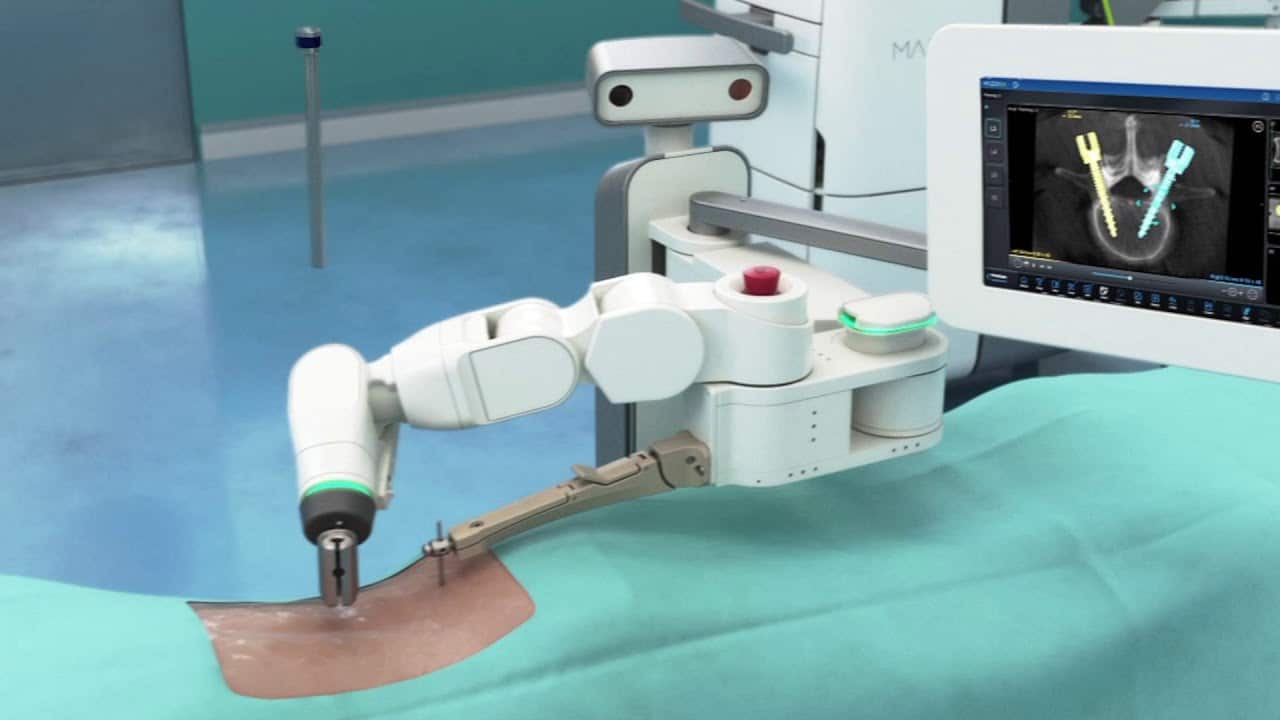April 06, 2023 — Vail, Colorado Dr. Michael Gallizzi, a robotic and endoscopic spine surgeon who is one of the newest members of The Steadman Clinic’s elite surgical staff, completed his 200th robotic procedure on April 4. Dr. Gallizzi accomplished his 100th robotic operation on April 19, 2022, less than a year ago. Prior to joining the Steadman team, he had a highly successful practice in Denver.
What was the primary driver behind this rise in minimally invasive and robotic spinal procedures?
“The biggest thing—especially when you’re revising previous constructs or someone’s previous spinal fusion — is that you have the ability to build off their old surgery and then add the new surgical components,” continued Dr. Gallizzi,” said Dr. Gallizzi. “The advantage of using the robotic instrument is that you can preoperatively plan all the various components of the procedure, line up the screws or implant them precisely where they need to be. As a result, everything becomes analogous in the patient’s mind. Even the finest surgeons would find this incredibly challenging without robotics, but thanks to robotics, patients who have undergone procedures in the past can now have better results because the procedure is more dependable and reproducible. The clinical outcomes, patient recovery, and enthusiasm for having a robotic surgery have all been overwhelmingly good.”
According to Dr. Gallizzi, “The long-standing innovative history that Dr. Steadman initiated at his Clinic really drove it to be one of the country’s leaders in orthopedic surgery.”
“It’s the case application of robotic surgery that enables the procedures to continue to grow,” said Dr. Gallizzi. “I’ve been using the robot for some posterior cervical work, which was typically done in a more open fashion.
“One of the newer uses of the robotic tool is in the revision space,” added Dr. Gallizzi. “For some cases where we need to remove hardware, I’m actually able to put the scope through the robot as a targeting tool. There I do some of the work with the scope, in combination with the robot to be able to remove deep hardware that’s hard to access.”
Dr. Gallizzi will be at the Society for Minimally Invasive Spine Surgery conference to give a lecture about the current state of robotic surgery in Melbourne, Australia in May. “I will be headed there to talk about the current challenges we face and where we’re going with robotic spine surgery. Here in Colorado, it went from me being the first user of this system back in 2019 to where there are now about 17 robots of this type placed in our state alone. That’s just in a four-year timespan. That’s how much things have changed. You can imagine that probably 15 years from now, if you’re not using robotic technology in some way, shape or form it may be a struggle, because patients will demand precise, reproducible surgery.”
